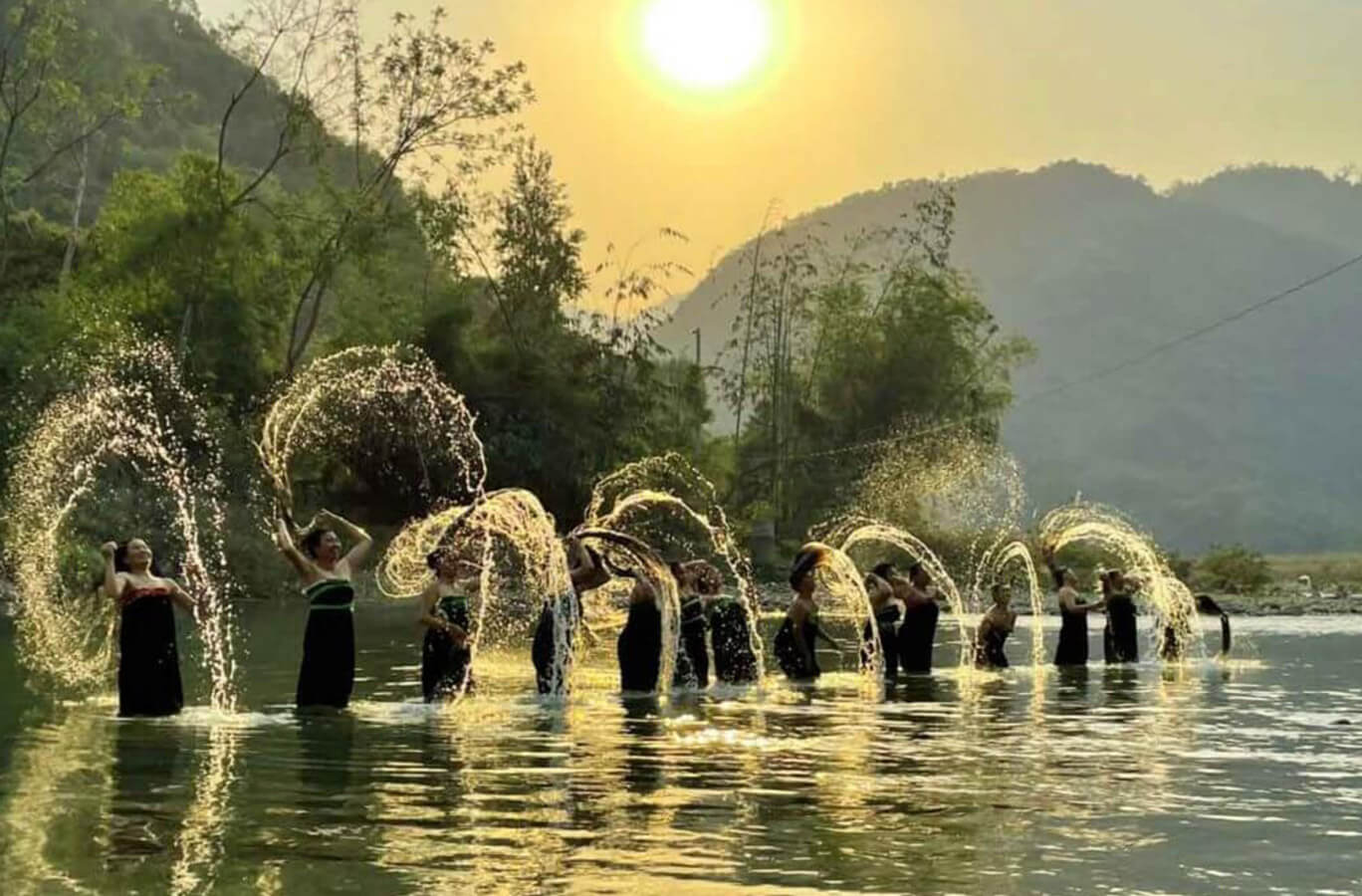
- On 09/02/2024
- In Blogs Travel Tips
- Tags:
The Beauty of Nang Han Festival
Nang Han Festival is a beautiful culture of Thai minority in Lai Chau, Vietnam that is annually celebrated on the 15th day of the Second Lunar Month
By Vietnam Tourism Information, Vietnam Travel | Cổng thông tin Điện tử Tỉnh Lai Châu
Nang Han Festival honoring the heroine had to expel invaders of White Thai people, was held to just grateful She Han, both seek a prosperous, peaceful life, human condition, material prosperity, for better weather throughout the village. The festival is celebrated on the 15th day of the Second Lunar Month at the Xi’an Muong So. On this day, people offer incense, flowers, farm products, food made by the village.
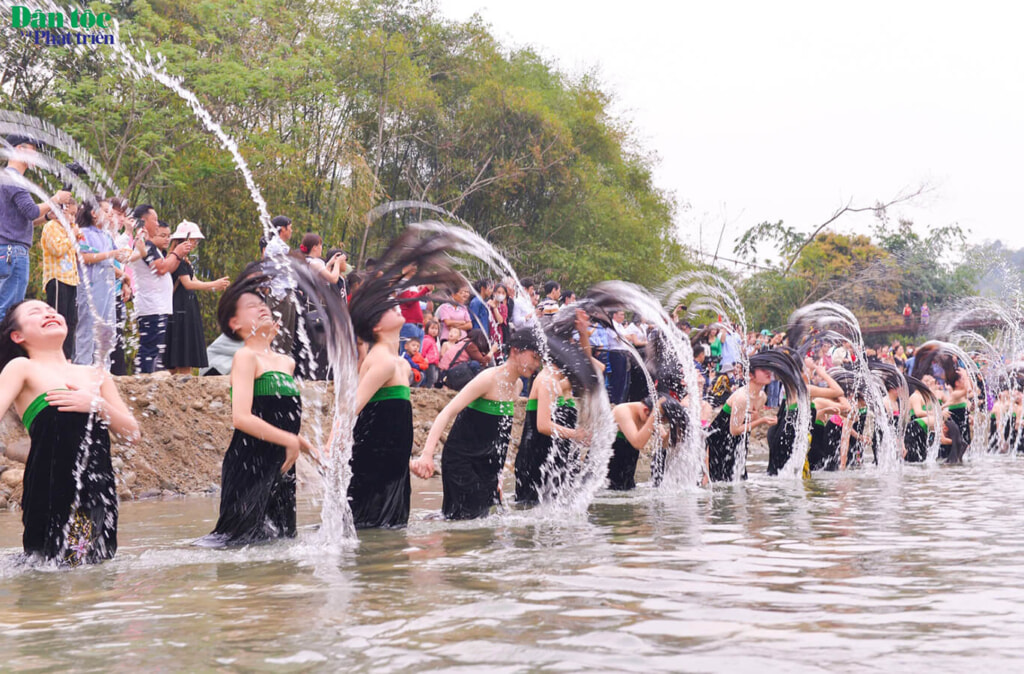
According to the legend of the Thai people in Muong - Phong Tho, Lai Chau, the Han She is the heavenly home, was sent down to earth born as a daughter of a poor family. At that time, Muong always been the enemy of the North invaded, her pulse military rulers against the enemy, victory, liberation Muong So. After defeating the enemy, she returned to heaven. God made the land for the shrine in the ruins of her home, which has battered the country Shrine besides showering before she ascended to Heaven.
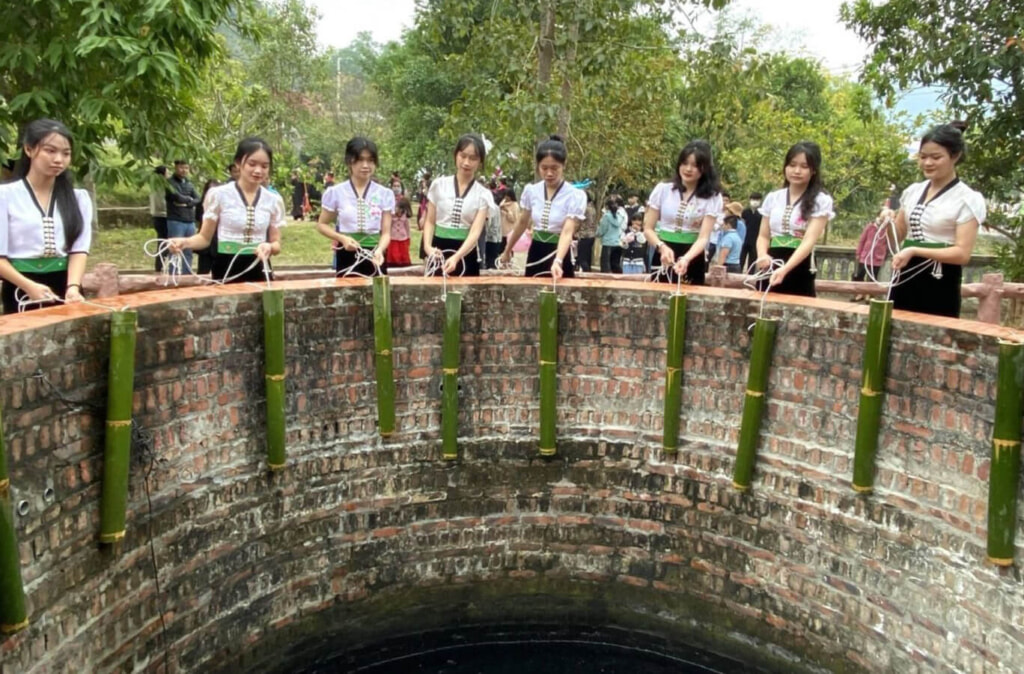
Nang Han was Thai community worship the Goddess. Han She became one of six gods have supernatural powers in folk beliefs of the Thai people. Since 2008, the cultural sector of Lai Chau province has given a policy to recover Nang Han festival after 60 years forgotten. Annually on the 15th day of the Second Lunar Month in Tay An village, Muong So commune, Thai people rejoice to hold the festival. On that day, villagers carry a thurible, flower, agricultural products and food created by themselve. In addition, there are also many unique art activities such as dances with Thai characters integrating with the sound of Tinh tau.
[Theo Cổng thông tin Điện tử Tỉnh Lai Châu]
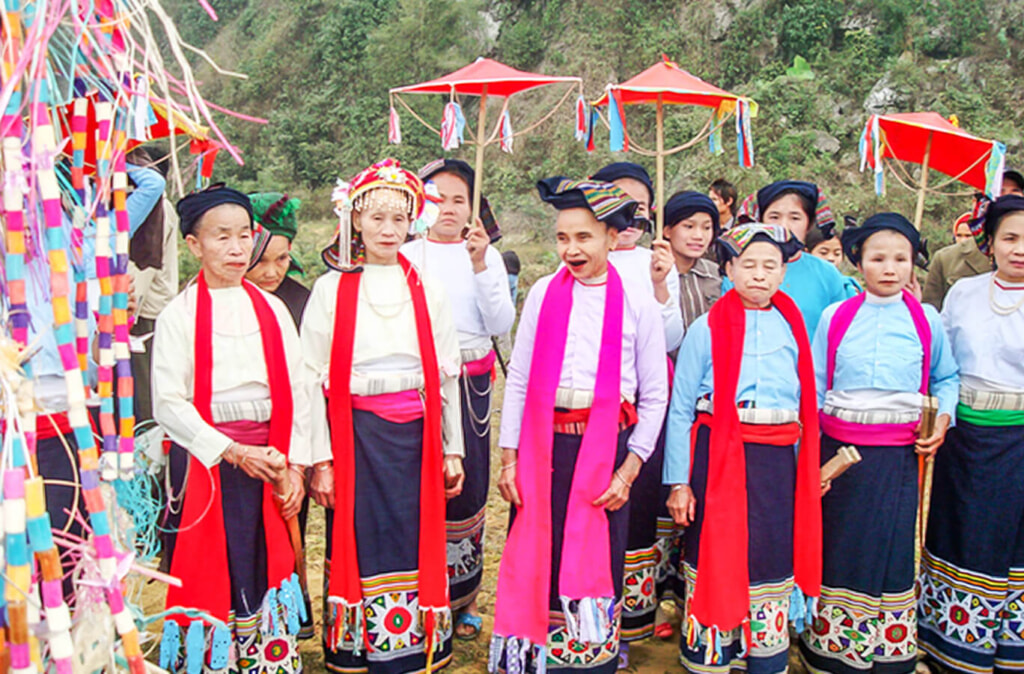
Art of Xòe dance of the Tai people in Viet Nam
By UNESCO
Xòe is a form of Vietnamese dancing with movements that symbolize human activities in ritual, culture, life and work. It is performed at rituals, weddings, village festivals and community events. There are three main types of xòe: ritual, circle and presentational. The ritual and presentational xòe dances are named after props used during certain performances. For instance, there is scarf xòe, conical hat xòe, fan xòe, bamboo pole xòe, music xòe, stick xòe and flower xòe.
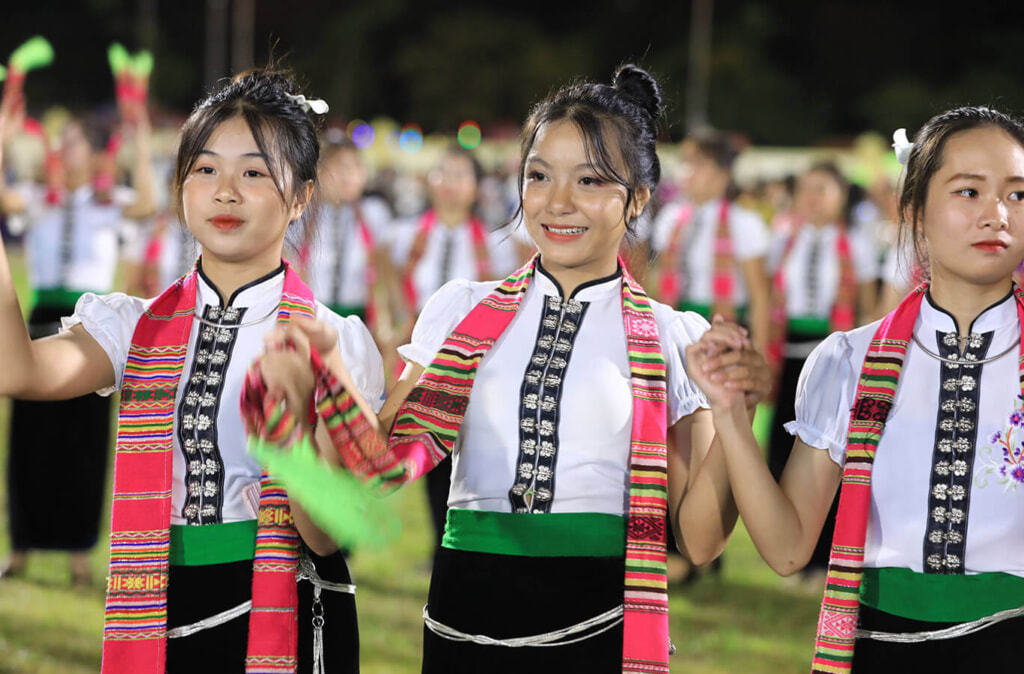
But the most popular form is circle xòe, wherein dancers form a circle and perform in harmony. The basic movements include raising and opening the hands, then lowering them and clasping the hands of the adjacent person. The dancers follow rhythmic footsteps, slightly arching the chest and leaning backwards. Although simple, the dance movements symbolize wishes for community health and harmony.
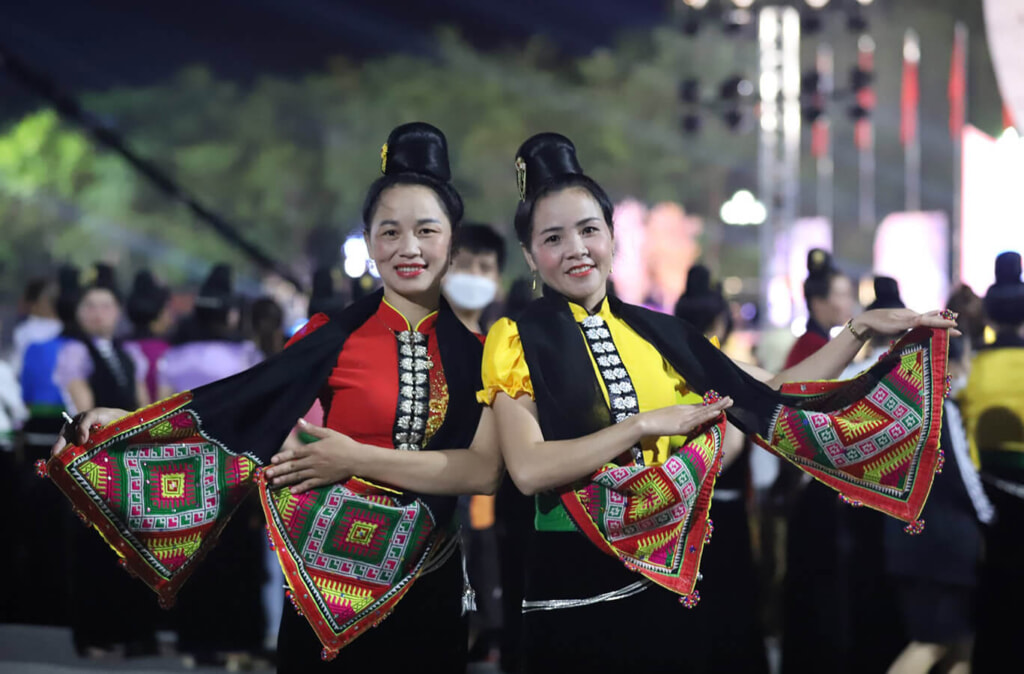
The dance is accompanied by various musical instruments, including gourd lutes, mouth organs, drums, gongs, cymbals and reed flutes. The instrumental music blends with the vocals and the jingling of the silver jewellery hanging around the waists of the women. Transmitted from generation to generation within families, dance troupes and schools, the xòe dance has become a symbol of hospitality and an important identity marker for the Tai people in north-western Viet Nam.
By UNESCO
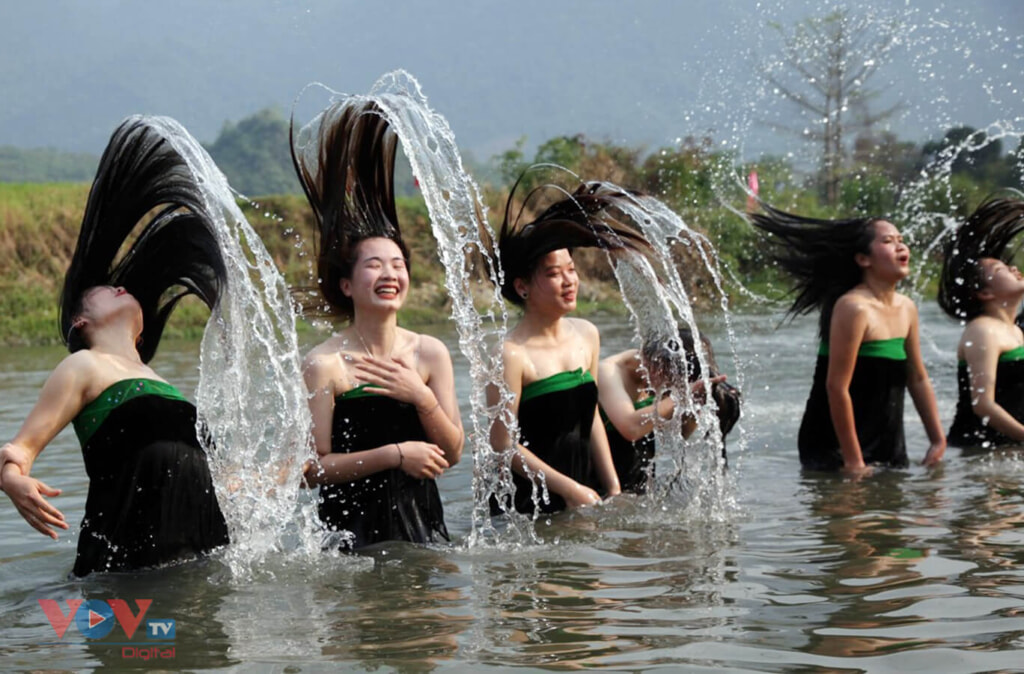
Thiên Xuân Travel – Live your travel dreams!
Park 2, 208 Nguyen Huu Canh Street, Ward 22,
Binh Thanh District, Ho Chi Minh City, Vietnam
📨 booking@thienxuantravel.com
☎️ +84 888 890 898 — 0938 558 228
Office in the United States
14114 Beech Glen Dr, Houston, TX 77083
☎️ +1 (281) 906-2744

